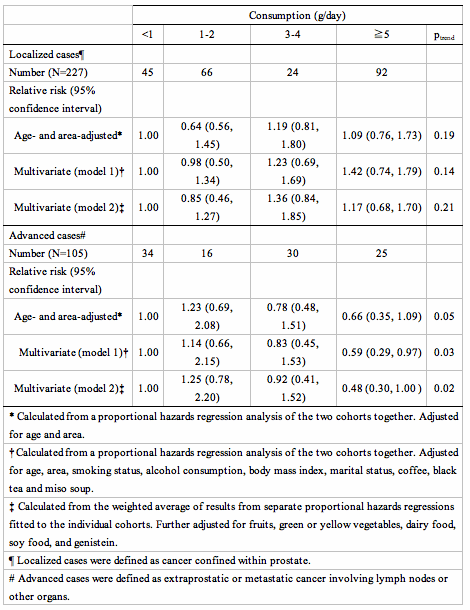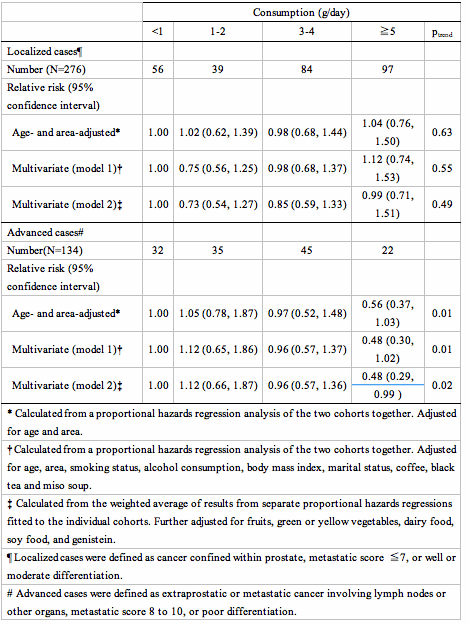査読者への回答 その1
著者回答の目的は、この研究が信頼できるものであり、著者が自信をもっていることを編集者に納得させることにあります。回答はあなたの研究者としての能力を示す好機ととらえることもできます。以下に示す例では、著者は主題の再構成とデータの再分析を行っています。各コメントに対する著者の解答は質問範囲のすべてをカバーするものであり、詳細かつ明瞭で、編集者と査読者に信頼感を与えるものになっています。
RESPONSE TO REVIEWER 1:
We wish to express our appreciation to the Reviewer for his or her insightful comments, which have helped us significantly improve the paper.
Comment 1: The manuscript may benefit from some additional analyses. First, please give the stage and grade distributions of cases. I would like to see the analyses stratified by grade (2-7, 8-10) and stage separately, using categories for missing as needed. The definition of advanced disease used in the analyses is a bit odd, as it appears that local stage cases with metastatic score 8-10 were classified as localized, but if stage were missing they were classified as advanced. I would accept a definition of metastatic score 8-10 or extraprostatic disease as advanced, but this would be in addition to seeing the data for grade and stage separately.
Response: We thank the Reviewer for this pertinent comment.
In this study, information on metastatic score or degree of differentiation was used only when cases could not be defined by information on local staging.
In accordance with the Reviewer's comment, we first divided cases using local stage only into the classifications of advanced cases (extraprostatic or metastatic cancer involving lymph nodes or other organs as regionally invasive or metastatic cases) and localized cases (cancer confined within prostate). There were 227 localized cases and 125 advanced, while 82 could not be defined as either group and were classified as undetermined cases.
Relative risk of prostate cancer according to consumption by local stage was as follows:
TABLE. Relative risk of prostate cancer according to consumption by local stage.

Moreover, we also divided cases for which local staging information was not available (75 undetermined cases) into localized and advanced cancer using information on metastatic score or degree of differentiation. We added 13 cases with a high metastatic score (8 to 10) or poor differentiation to the advanced cancer group. These criteria were selected to allow the identification of cases with a high likelihood of a poor prognosis. Further, we added 42 cases with a low metastatic score (≦7) or well or moderate differentiation to the localized cancer group. Finally, we confirmed 256 localized cases, 101 advanced cases and 27 (5% of total) undetermined cases.
Relative risk of prostate cancer according to consumption by local stage, metastatic score or histological differentiation was as follows:
TABLE . Relative risk of prostate cancer according to consumption by local stage, metastatic score or histological differentiation.

We compared these two tables, but they were not substantially different. We therefore divided the cases by using the information on local stage, metastatic score or histological differentiation (reference 25). Further, we did not change Table 2. However, as the reviewer noted, the possibility of misclassification exists, in that local stage cases with metastatic score 8-10 were classified as localized, but as advanced if stage was missing.
We have therefore added the following text as one of the limitations of the study (p. 18, lines 4-9):
“Finally, there is possibility of misclassification that local stage cases with high metastatic score (8 to 10) were classified as localized, but if stage information were missing they were classified as advanced. Unfortunately, we could not classify cases by metastatic score only, because we collected metastatic score as supplementary information, and the proportion of cases with information of metastatic score were low (23% of total cases).”
In accordance with Reviewer 1’s comment, we have changed the expression of definition of localized and advanced prostate cancer.
Moreover, in accordance with comment 4 of Reviewer 3, we have made a new section “Definition of localized and advanced prostate cancer” in Materials and Methods, and added the following text (p. 9, line 10- p. 9, line 18):
“Definition of localized and advanced prostate cancer For cancer registry in our study, local staging is required item, but metastatic score is supplementary information. Therefore, cases were classified as advanced cases (extraprostatic or metastatic cancer involving lymph nodes or other organs) and localized cases (cancer confined within prostate). There were 227 localized cases and 125 advanced. Of these cases, 82 cases (20% of total) could not be defined as either group (undetermined cases), because some prostate cancers which a prostatectomy was not done were not determined local stage by using local imaging only.. The stage distribution in our study was similar to those in Japan overall (24). Moreover, if the information of local staging was not available (75 undetermined cases), we added 11 cases with a high metastatic score (8 to 10) or poor differentiation to advanced cancer. These criteria were selected to allow the identification of cases with a high likelihood of poor prognosis. On the other hand, we added 42 cases with a low metastatic score (≦7) or well or moderate differentiation to localized cancer. Finally, we confirmed 256 localized cases, 101 advanced cases and 27 (5% of total) undetermined cases (25).”
Further, we have changed the following text from (p. 2, lines 12-14):
“During this time, 384 men were newly diagnosed with prostate cancer, of whom 101 had advanced cases, 256 were organ-localized and 27 were of an undetermined stage.”
to
“During this time, 384 men were newly diagnosed with prostate cancer, of whom 101 had advanced cases, 256 were localized and 27 were of an undetermined stage.”
We have also added the following reference.
“25. Kurahashi N, Iwasaki M, Sasazuki S, Otani T, Inoue M, Tsugane S. Soy product and isoflavone consumption in relation to prostate cancer in Japanese men. Cancer Epidemiol Biomarkers Prev 2007;16:538-45.”
Comment 2: Data in Table 1 should be adjusted for age. What are the p-values testing? Perhaps indicating which means differ across consumption categories would be more informative.
Response: In accordance with the Reviewer's comment, Table 1 has been adjusted for age. P difference values for characteristics between categories of consumption were calculated by analysis of variance and the chi-square test for homogeneity.
Thus, the following sentence has been inserted in the footnote in Table 1.
“* All variables except for age were standardized to the age distribution (categorized by 5-year intervals) of the entire cohort.” “‡ P difference values of characteristics between categories of consumption were calculated by analysis of variance and the chi-square test for homogeneity.”
The questionnaires used in Cohort I and Cohort II differed slightly with respect to food items, method of expression and frequency categories. Therefore, when we used covariates of fruits, green or yellow vegetables, dairy food, soy food and genistein, we calculated separate estimates for Cohort I and Cohort II, and then analyzed the combined result using a fixed-effects model. Thus, we could not calculate the mean of food item, and we showed that the percentages differ across consumption categories in the whole cohort.
Further we have changed the following text (p. 13, lines 4-7) from:
“Subject characteristics at baseline according to category of consumption are shown in Table 1. Persons with high consumption were older. The proportion of current smokers was high in the highest category of consumption but that among regular drinkers was low. Fewer men lived with their wife in the lowest category than in the other categories. The proportion of daily coffee or black tea drinkers decreased as consumption increased. Further, intake of miso soup, fruits, green or yellow vegetables, dairy food and soy food increased with intake.”
to
“Subject characteristics at baseline according to category of consumption are shown in Table 1. Participants with more consumption tend to be older, to smoke more, to have higher proportion of men living with their wife, to consume more miso soup, fruits, vegetables, and soy food, and to consume less coffee.”
Comment 3: The statement that risk of total and localized cancer did not differ by consumption is not altogether logical. The finding was no association for local disease and a reduced risk for advanced. The only reason that there was no association for total cancer was that the effect for advanced was diluted. Perhaps authors could find a more clear way to give these results.
Response: In accordance with the Reviewer's comment, we have changed the following text in the Introduction from (p. 1, line 18):
"was not associated with total or localized prostate cancer.”
to
“ was not associated with localized prostate cancer.”
Similarly, we have changed the following text in the Results (p.13, line 3-4)
“In contrast, no association was observed between consumption and total or localized prostate cancer.”
to:
“In contrast, no association was observed between consumption and localized prostate cancer.”
Comment 4: Please have the English reviewed by a medical editor. Figures: Please reconsider the need for the figures, some of which don’t add much to the manuscript. Also, can Tables 2 and 5 be combined into one table?
Response: We have had the manuscript rewritten by an experienced scientific editor, who has improved the grammar and stylistic expression of the paper
In accordance with the Reviewer’s comment, we have deleted Figures 3, 4 and 6 from the revised manuscript and have combined Tables 2 and 5 into a new Table 2
We wish to thank the Reviewer again for his or her valuable comments.
回答の冒頭は感謝の言葉で始めましょう。次のような表現も有効です:
'We wish to express our strong appreciation to the Reviewer for his or her her insightful comments on our paper. We feel the comments have helped us significantly improve the paper. In particular, we wish to acknowledge the Reviewer's her highly valuable comments on X.'
- X部分はそれぞれの場合にあてはまるような内容にします。
主コメントへの回答は感謝の言葉で始めます。上の文以外の例文を以下に示しますが、コメントへの評価を強調するのも良いでしょう。
- We appreciate the Reviewer's comment on this point.
- We wish to thank the Reviewer for this comment.
- We thank the Reviewer for this insightful comment.
- We strongly appreciate the Reviewer's comment on this point.
- We wish to express our deep appreciation to the Reviewer for his her or her her insightful comment on this point.
主コメント以外の細かなコメントに感謝の言葉を述べる必要はありません。
‘In accordance with the Reviewer’s comment,’ という言い方が標準的です。
‘According to the Reviewer’s comment’ という言い方は意味が異なり適切でないのでここでは使えません。
データ処理/分析に関するコメントに対し、十分な回答が必要です。著者は症例を2つに分類し直しました。また再分類の方法と結果について注意深く述べ、結果を表にしました。
さらに、引用文献を追加して原稿を全面的に書き改め、それらを詳しく述べました。 このように、コメントに応じて十分な回答を作ることが何よりも大切です
著者は手抜きをしていません。表は脚注も含め、最初の原稿と同様に細心の注意をもって作成されています。実際、そのまま原稿に添付できるほど良くできています。
この段落で著者は、追加した再分類の方法について注意深く包括的に説明しています。ここで著者が3つのアイデアを‘Moreover’, ‘Further’, ‘Finally’ という単語を使って述べている点に注意してください。このパターンは読み手に理解しやすく、効果的です。
注意 - ‘on the other hand’ という表現は間違って使われる例が多いので、使用しない方が無難です。その代わりとして‘in contrast’ を使うことをお薦めします。
この段落で著者は、追加した再分類の方法について注意深く包括的に説明しています。ここで著者が3つのアイデアを‘Moreover’, ‘Further’, ‘Finally’ という単語を使って述べている点に注意してください。このパターンは読み手に理解しやすく、効果的です。
注意 - ‘on the other hand’ という表現は間違って使われる例が多いので、使用しない方が無難です。その代わりとして‘in contrast’ を使うことをお薦めします。
この段落で著者は、追加した再分類の方法について注意深く包括的に説明しています。ここで著者が3つのアイデアを‘Moreover’, ‘Further’, ‘Finally’ という単語を使って述べている点に注意してください。このパターンは読み手に理解しやすく、効果的です。
注意 - ‘on the other hand’ という表現は間違って使われる例が多いので、使用しない方が無難です。その代わりとして‘in contrast’ を使うことをお薦めします。
2番目の表も同じく包括的に作られています。査読者コメントに対する著者の取り組みは卓越しています。
著者は、広汎な再分類を行い、2つの分類方法で違いは生じないと述べています。 また、著者は後で用いた方法のほうが適切であることを文献によって示しています。
包括的な分析と追加文献が著者の回答内容を支持しているので、著者がTable 2を変更しないことは全面的に正当化されています。
動詞の時制に気をつけましょう: 研究で得た結果を述べる時には過去型を用います:
- We compared these two tables...
- We divided the cases...
しかし、改訂原稿の変更部分を述べる時には現在完了型を用います:
- We have therefore added...
- We have deleted Figure 3.
著者はここで査読者コメントを評価しています。続く文を見てください:
‘However, as the reviewer noted, the possibility of misclassification exists, in that... We have therefore added the following text as one of the limitations of the study’.
研究に限界があるのは当然です – そこで、コメントを評価して編集者や査読者の信頼を得るのです。コメントの無視は信頼を損ね、査読者の役割を妨害していると受け取られます。研究の限界についての対応の仕方についてより詳しく知りたい方はこちら[link]をご参照ください。
追加テキスト部分にはインデントと下線を施し、ページと行を付記しましょう。
形式の詳細については査読者2への回答を参照してください。
前にも述べましたが、改訂部分は現在完了形でwe have made...と書きましょう。
査読者1と査読者3はお互いのコメントを見ていない可能性がありますので、著者は個々のコメントに対し回答します。
著者は査読者コメントに対応して原稿を細心の注意で改訂しています。
原文と改訂文を ‘from’ と ‘to’ を用いて記載し、変更部分に下線を施しています – 本例においては、1つの単語を変えただけですが、査読者が理解しやすいように全文を記載しています。
テキスト同様、追加した引用文献にも下線を施します。
ここでは、査読者コメントは表についてのみでしたが、著者はそのコメントは他の部分にも関係がある、より広い意味にとらえています。
コメント2に対する著者のアプローチは興味あるもので、参考になります。
最初に、著者は表そのもの(ここでは脚注)の改訂について述べています。
さらに、著者はそのコメントが方法論に関蓮すると述べています。この節は査読者への回答としては本来必要とされない部分ですが、査読者の理解を助けることにもなっていることから、著者がデータに自信を持ち、オープンであることが示されます。
つまり、編集者や査読者に対して隠し事がないことを示しています。 このアプローチにより彼らの信頼は増すことでしょう。著者はこれを機会に自分が優れた研究者であることをアピールしているのです。
同様に、著者は適切で正しい形式のコメントを本文に追加しています。
ここでも、著者は編集者と査読者に能力をアピールする好機として回答を利用しているのです。
もし査読者が現在の論文では実行不可能な追加試験を要求してきた場合には、次の文が使えます:
- We agree that additional information on X as the reviewer suggested would be valuable. We are now investigating this point and intend to report it in a later paper.
- We agree that additional information on X as the reviewer suggested would be valuable. We are now considering the idea of investigating this point in a future paper.
- We agree that additional information on X as the reviewer suggested would be valuable. Regrettably, however, because of Y, we are unable to do the experimentation.
- In any case, because of Y, we would be unable to do this additional study.
テキストの変更を述べるには多くの方法があります。以下に例文を示します:
- We agree that this point requires clarification, and have added the following text to the Discussion (p. 10, lines 7-10): [New text]
- The reviewer's comment is correct. To clarify, we have added the following text to the Introduction (p. 3, lines 1-3): [New text]
- The results of the additional work suggested by the reviewer showed X. We have added the following text to the Discussion (p. 10, lines 19-23): [New text]
ここでも著者は査読者コメントの意味する事項についてあらゆる可能性を考慮し、原稿の関連部分と対応させています。原稿は1箇所だけ直せば良いというものではありません。
1箇所を直せば関連する他の部分も修正が必要になります。必要箇所を探して修正し、修正部分を注意深く記述しましょう。ゴールは、回答を通してあなたの研究者としての力量を査読者にアピールすることだという点を忘れないでください。
査読者によっては、論文が良く書かれているにもかかわらず、言語的な修正を要求してくることがあります。そのような場合の回答文は:
- The paper has been edited and rewritten by an experienced scientific editor, who has improved the grammar and stylistic expression of the paper.
記述を短くするようにとの要求もよくあります。可能ならば受け入れましょう。これ以外の表現方法としては:
- In accordance with the reviewer's request, we have shortened the manuscript by X words to a revised total of Y words. This has been achieved by changing the style of expression and deleting unnecessary text.
- As requested, we have removed these data from the Results section and placed them in the newly added Table 6.
- In accordance with the Reviewer ’s comment, we have combined the data from the previous Tables 2 and 5 into a new Table 2.
回答の最後に査読者に感謝の意を表しましょう。これ以外の表現として:
- Thank you again for your comments on our paper. We trust that the revised manuscript is suitable for publication
‘trust’ という動詞は ‘hope’ より上品で、好感を与えます
Next articles
- 再提出時の送付状
- 査読者への回答 その1
- 査読者への回答 その2
- 回答文ライブラリー
